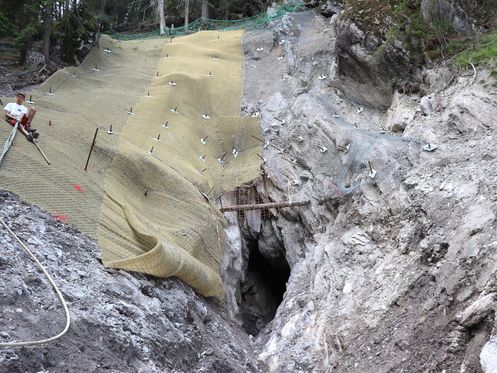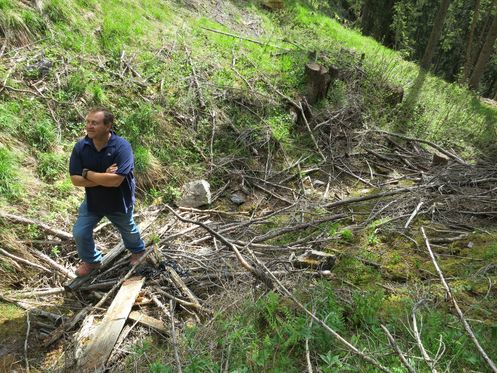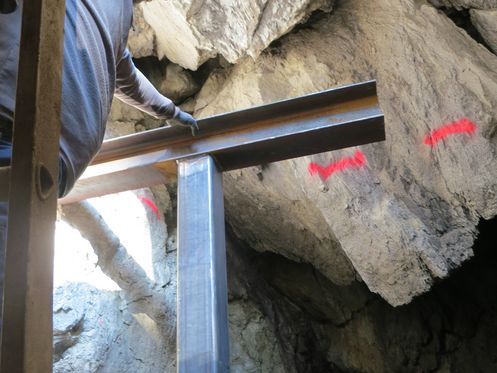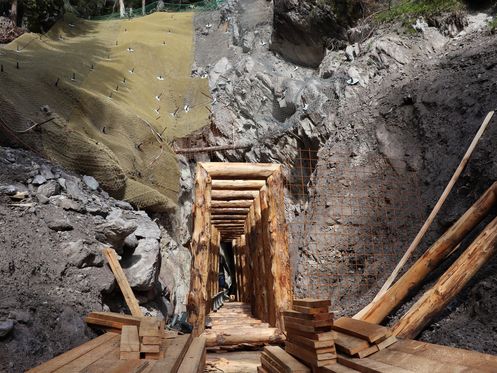THE BEGINNINGS OF MINING, THE MINERS’ PIT, AND THE ART OF MINE TIMBERING
From here the old mountain path continues steeper up the mountain to the location of the Gand mining tunnels. The ore-bearing Alpine Verrucano also begins to emerge slightly further up the mountain, appearing at different places along the sides of the path. Due to its exposure and good visibility, the rock would have immediately caught a prospector’s trained eye.
Especially the emerald colour of the malachite oxidation mineral would have revealed the presence of copper ore. Additional evidence of earlier mining activity can be found further along the 200-metre stretch of the path. This is where the first ore outcrop is assumed to have been found. This find could also have been the reason why a mining site was established at this very location. The first mines created here were open-pit mines, as shown on Board No. 7.
You are now standing at the opening of the old Miners’ Pit. The pit’s name has been familiar to the people local to the St. Anton region for a long time. This is also one of the reasons this circular educational walk was installed in this location. It has not yet been determined when the mine was developed, however its construction was based upon the traditional method of driving timber into the mountain until solid rock was reached. Scree and drifts that had naturally collected at the base of the rock hindered
the installation of further measures to support the mine. In addition, waste material originating from the mines higher up the mountain is also assumed to have made work in this tunnel difficult. The rotted wood from the supports eventually caused the tunnel to collapse almost to a state where it could no longer be recognised. The mine has been recreated as close to the original as possible, making it accessible again and creating a unique opportunity to relive Gand’s rich mining past.

Fig.: Area ground support at the opening in the rock

Fig.: Markus Kaser (†) at the pinge of the collapsed Miners’ Tunnel in 2017, when it was still in its original state

Fig.: Preparation work for the construction of the new roof support

Fig.: Construction work at the Miners’ Tunnel: installation of the new timbering after removal of the old timbering

If a tunnel was created in solid rock, additional supporting measures such as timbering were unnecessary. These types of mines often survived over decades. However, if a mine was to be constructed in loose rock, timber supports as those used in the Miners’ Tunnel were necessary to prevent collapse from the roof, face, or rib.
Every other metre, a drift set was put in place to support the roof, the sides, and sometimes also the floor, allowing the miners to safely move deeper into the mountain, chamber by chamber. The material that could be excavated below the supported roof span was removed from the mine bit by bit to create additional space. Depending on the rock pressure, some mines were little more than narrow passages where no more than two miners could work side by side.